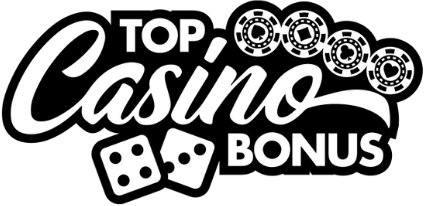How to play blackjack: a beginner’s step-by-step guide
Blackjack has earned its place in the halls of casino legend, not just for its simple format but for the raw psychological warfare it unleashes across a felt table. At its core, it’s a duel between you and the dealer, a game of decisions sharpened by odds, instinct, and a little grit. Yet too many walk into this arena ill-equipped, mistaking luck for strategy and flash for fundamentals. Let’s straighten that out, step by step, the proper way.
Table of contents
Understanding the basics of blackjack
Most newcomers overcomplicate blackjack, layering on superstitions or relying on hunches. Don’t be one of them. At its heart, blackjack is about getting a hand total as close to 21 as possible without busting (going over). But here’s the kicker: you only need to beat the dealer’s hand. You don’t need exactly 21. That misunderstanding alone wastes more chips than any bad shuffle.
The cards and their values
Numbered cards are worth their face value, face cards (J, Q, K) clock in at 10, and the ace? She’s flexible. Count it as 1 or 11, whichever serves your hand best. That versatility makes the ace the best card in your toolkit, especially useful when you’re sitting on a soft hand (a hand with an ace counted as 11).
Object of the game
You’ll typically receive two cards face-up, while the dealer gets one up and one down (the hole card). Total your first two, then decide: hit to draw another, stand to stay, double down to double your bet and receive one card only, or split if you’ve got a pair. Make no mistake, every decision rests on comparing your position to the dealer’s potential strength.
Setting up at the table
Choose your table wisely. Watch how the dealer plays, do they hit on soft 17? What’s the deck penetration? How many decks are in use? Most online games these days use 4 to 8 decks, and that affects probabilities more than casual players realize. Whether you’re learning in person or on a platform like LeoVegas where live dealer blackjack brings table dynamics straight to your screen, environment matters.
Placing the bet
Wager before cards are dealt. My advice? Don’t go all-in first hand unless you’re just itching to leave early. Start small, observe streaks and tendencies, and most of all, don’t bet more than you care to lose chasing. That’s a young man’s game, and this isn’t craps.
Major player decisions: knowing when and why
Now to the meat of it, decision-making. Blackjack rewards those who think two steps ahead. Most dabblers just keep hitting “hit” blindly. That’s not playing; that’s flailing. You want to consider probability and dealer tells, not emotion.
Hit vs. stand
If your total’s under 12, hit, period. But once you get into the 13-17 range, your strategy pivots based on the dealer’s upcard. If the dealer shows 2 through 6, you stand on 12 or higher, why? Because they’re holding a weak hand with a high bust probability. Force the dealer to draw themselves out.
Double down
This move is underutilized by most. Double down when you’ve got 10 or 11 and the dealer’s card is weak (say, 4 to 6). You’ll only get one more card so you better be reasonably confident. If you’re playing at a top tier casino like Sloty, make sure they allow doubling down after splits, small rule variations like this have huge impact over time.
Splitting pairs
Split aces and eights, always. Split 10s? Never, unless you’re counting cards and have solid reads. Avoid splitting 5s and 10s. Instead, treat a pair of 5s as a hard 10 and double down. You’re deep in decisions a new player often struggles with, but practicing gets you fluent. Platforms like Playstar often have low-stakes blackjack for practicing without torching your bankroll.
Dealer rules and what they mean for you
The dealer isn’t making discretionary decisions, they follow fixed rules. Most hit on soft 17s, though some stand. Recognizing this helps you strategize. If they must hit on soft 17, they’re more likely to bust, slightly tilting luck toward the player. It’s no guarantee, but every percentage helps. And believe me, over enough shoes, those little edges separate survivors from suckers.
Table etiquette and pressure
Don’t touch your cards in a face-up game. Don’t blame others for your loss. And whatever you do, don’t give unsolicited advice. Keep a rhythm. Stay sharp. This is especially true in live dealer tables at places like Rizk, where timely decisions prevent delays for the whole room. Stalling because you’re not prepared? That’s the mark of an amateur.
Card counting: the technique feared by casinos
Let’s be clear: card counting isn’t illegal, but it will get you kicked out of land-based venues faster than you can say “shoe.” Still, understanding basic count systems like Hi-Lo sharpens your grasp of the game on a fundamental level. Anything that heightens your awareness of deck composition isn’t cheating, it’s mastery. Get to that level, and blackjack stops being a gamble and starts being a craft.
Practice tools and digital adaptation
In the online space, you can simulate hands endlessly using practice modes. It’s what I recommend before putting real chips down. Sites like The future of online slots offers some insight into the tech evolution coming to digital casino spaces. Even blackjack is adapting, with AI dealers and algorithmic shuffles changing how traditional players prepare.
Progression systems: fool’s gold or real edge?
You’ll hear about Martingale, Paroli, Fibonacci, betting strategies designed to recoup losses or ride hot streaks. Here’s the truth: they manage your money, not the odds. No pattern of bet sizing changes the 49-to-51 nature of the game. Use them if they keep you disciplined, but don’t ever think they tilt the math in your favor long term.
Staying sharp and knowing when to walk
Set a win goal. Set a loss limit. Stick to both. The hardest thing about blackjack isn’t learning the game, it’s unlearning your ego. You’re there to play well, not to prove something. I’ve seen too many fine players get wiped out because they didn’t know when to get up. Pride has no place at the table; precision does.
Blending tradition and modern efficiency
No matter how slick digital platforms become, whether you’re playing at LeoVegas or testing systems in Rizk, the fundamentals of blackjack don’t change. You can layer in analytics, card tracking, or surf through new interfaces, but the baseline skills that steer good blackjack remain rooted in age-old strategy and common sense.
Final thoughts
Blackjack may look like a dance between luck and chance, but those who know the rhythm realize it’s all steps and setups. Don’t chase the game. Command it. Play with cold calculation, not hope. That’s how you win, and how you leave respecting the game, no matter the result. Now grab a deck, and start playing the right way.





0 Comments